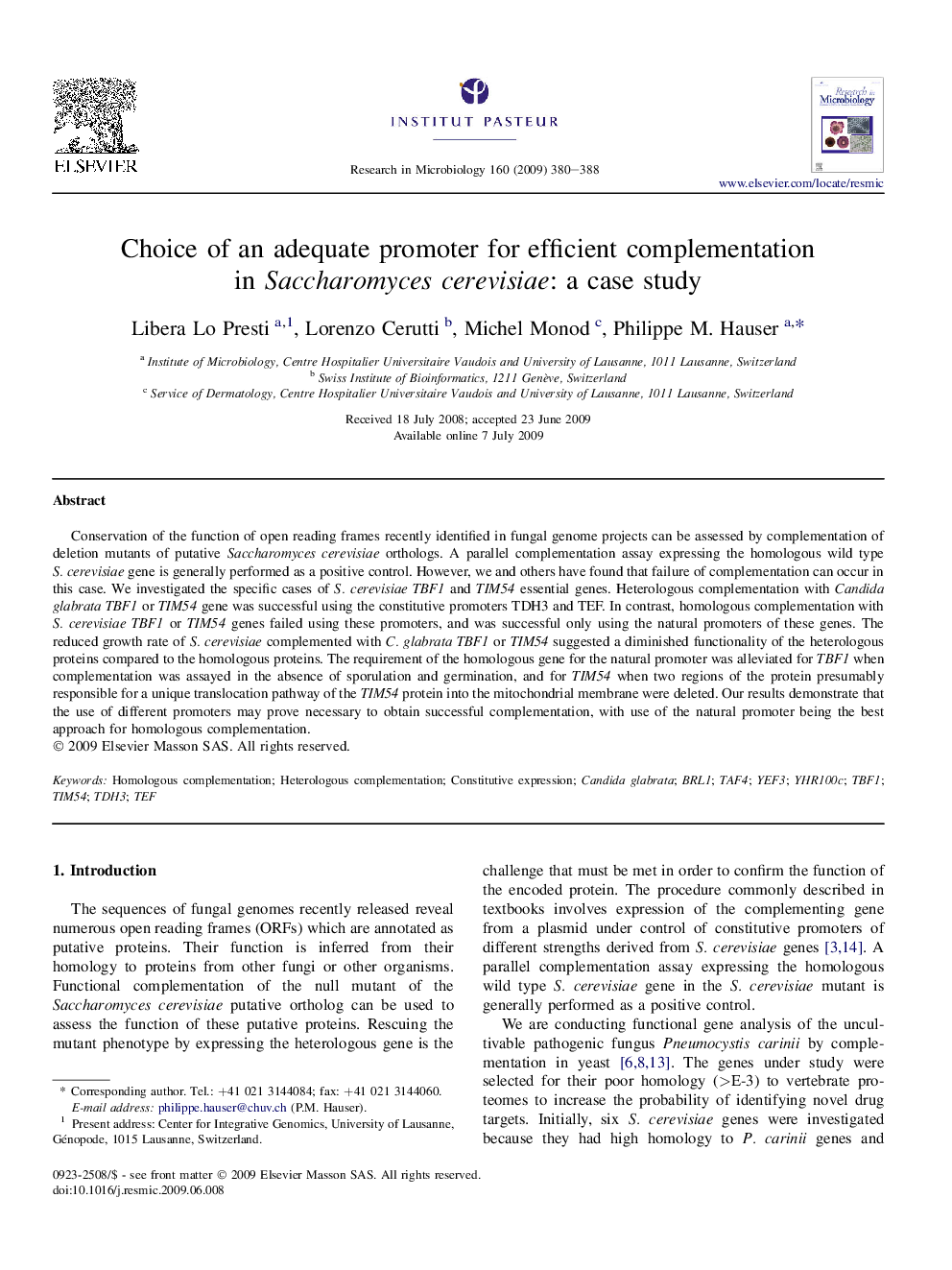| کد مقاله | کد نشریه | سال انتشار | مقاله انگلیسی | نسخه تمام متن |
|---|---|---|---|---|
| 4359149 | 1300486 | 2009 | 9 صفحه PDF | دانلود رایگان |
عنوان انگلیسی مقاله ISI
Choice of an adequate promoter for efficient complementation in Saccharomyces cerevisiae: a case study
دانلود مقاله + سفارش ترجمه
دانلود مقاله ISI انگلیسی
رایگان برای ایرانیان
کلمات کلیدی
موضوعات مرتبط
علوم زیستی و بیوفناوری
ایمنی شناسی و میکروب شناسی
میکروبیولوژی و بیوتکنولوژی کاربردی
پیش نمایش صفحه اول مقاله

چکیده انگلیسی
Conservation of the function of open reading frames recently identified in fungal genome projects can be assessed by complementation of deletion mutants of putative Saccharomyces cerevisiae orthologs. A parallel complementation assay expressing the homologous wild type S. cerevisiae gene is generally performed as a positive control. However, we and others have found that failure of complementation can occur in this case. We investigated the specific cases of S. cerevisiae TBF1 and TIM54 essential genes. Heterologous complementation with Candida glabrata TBF1 or TIM54 gene was successful using the constitutive promoters TDH3 and TEF. In contrast, homologous complementation with S. cerevisiae TBF1 or TIM54 genes failed using these promoters, and was successful only using the natural promoters of these genes. The reduced growth rate of S. cerevisiae complemented with C. glabrata TBF1 or TIM54 suggested a diminished functionality of the heterologous proteins compared to the homologous proteins. The requirement of the homologous gene for the natural promoter was alleviated for TBF1 when complementation was assayed in the absence of sporulation and germination, and for TIM54 when two regions of the protein presumably responsible for a unique translocation pathway of the TIM54 protein into the mitochondrial membrane were deleted. Our results demonstrate that the use of different promoters may prove necessary to obtain successful complementation, with use of the natural promoter being the best approach for homologous complementation.
ناشر
Database: Elsevier - ScienceDirect (ساینس دایرکت)
Journal: Research in Microbiology - Volume 160, Issue 6, JulyâAugust 2009, Pages 380-388
Journal: Research in Microbiology - Volume 160, Issue 6, JulyâAugust 2009, Pages 380-388
نویسندگان
Libera Lo Presti, Lorenzo Cerutti, Michel Monod, Philippe M. Hauser,